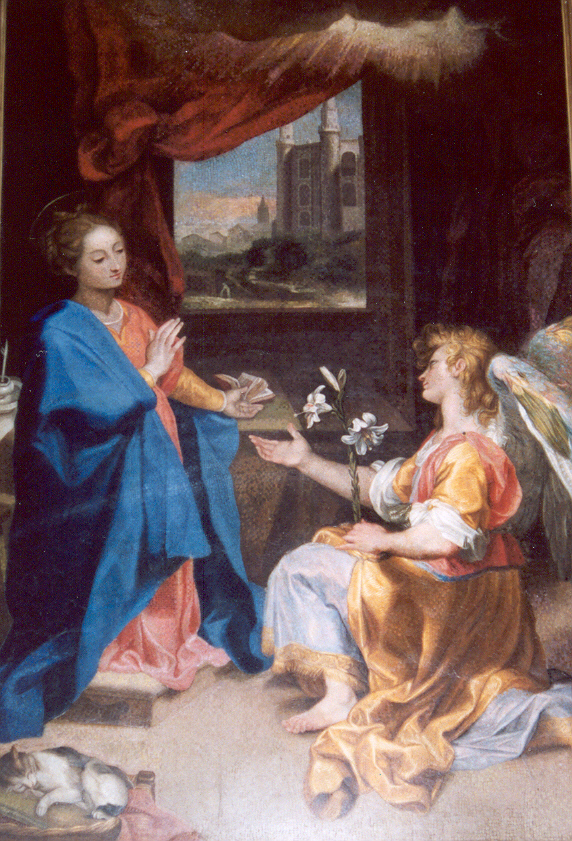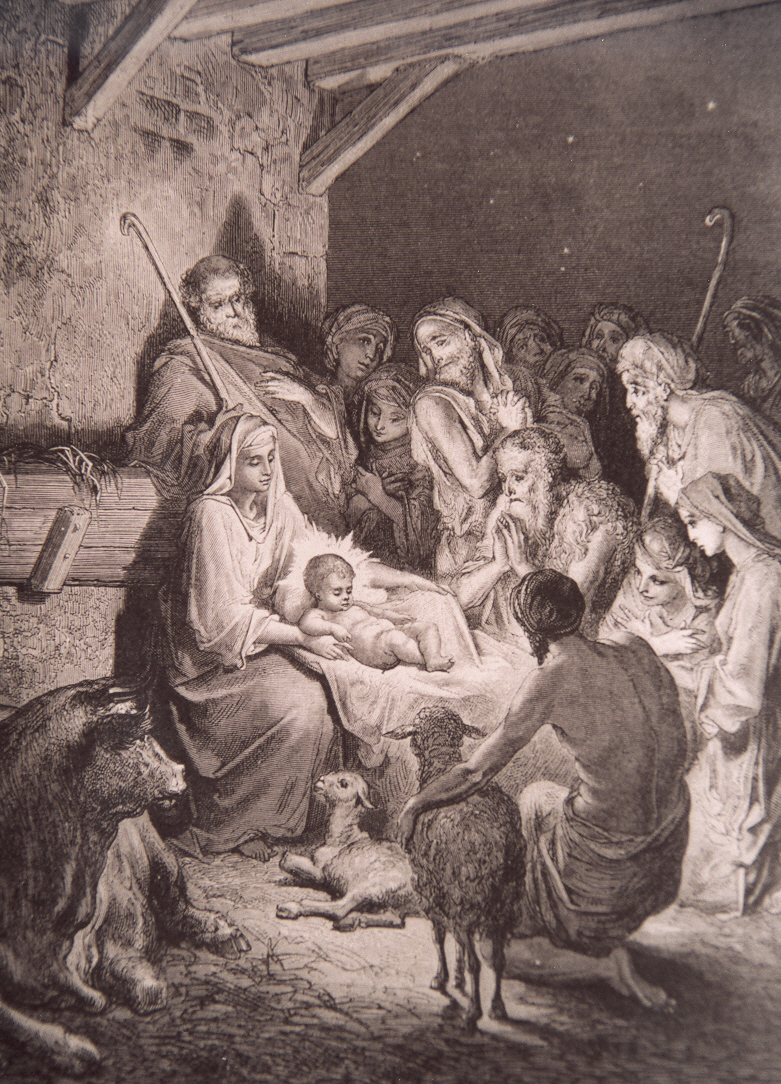
Return to
Index The Catholic Faith
Return to Level
Two Topic Index
Home Page
Legend has it that St. Francis of Assisi put together the first manger scene for Christmas with figures to inspire devotion - and that was about eight hundred years ago. The story of the birth of the Son of God has an endless appeal. For, considering who Jesus is, he chose for himself the humblest possible birth. He had every right to be born in a palace; he was born in a stable. He had every right to many servants; at most he had an ox and a donkey.
The Son of God did not come into the world with power and glory. He did not come to establish an earthly kingdom. He came to redeem the human race from sin. His birth was the first step toward that end.
The Gospel tells us that the birth of Jesus came in "the fullness of time", that is, at the time God had chosen and prepared. He chose a virgin, Mary of Nazareth, to be the mother of his Son, and let her remain a virgin before and after his birth. Isaiah the prophet had written: "Therefore, the Lord himself will give you a sign: the virgin shall be with child, and bear a son, and shall name him Emmanuel" (Is 7:14).
Mary had been chosen by God from among all Jewish girls. He had chosen her to be the Mother of his Son and he preserved her from the stain of Original Sin. From the first moment of her existence she was free of this sin, which has been passed on to every other descendant of Adam. Mary's soul was created "full of grace", and she always cooperated with God's grace. She never sinned - not once, not even in the smallest way. She loved God so intensely that the fire of her love lit up all of history and was most pleasing to God. God made her first in importance among all the people who had a major role to play in his plan of Redemption - first after Jesus, that is. But she was not a princess. She lived with her parents in the small town of Nazareth and was engaged to marry a man named Joseph, a carpenter of the same town.

Mary was still a young girl, her marriage not far away, when God sent an angel to her on a very special mission. She must have been startled. The angel, Gabriel, told her not to be afraid. He told her that she had found favor with God and had been chosen to be the Mother of the Savior. He told her that she would conceive the Child by the power of the Holy Spirit; thus, she would always remain a virgin. Furthermore, the Child would be called "Son of God."
Mary's answer was: "I am the handmaid of the Lord; let it be done to me according to your word" (Lk 1:38).
Then the angel left her, and God worked the miracle in which his only Son was conceived in her womb without an earthly father. When it became clear that Mary was going to bear a child, the same angel, Gabriel, told Joseph, Mary's fiancÚ, that Mary was with child by the Holy Spirit. This Child, he told Joseph, was to be named Jesus, because he would save his people from their sins.
So Joseph was relieved of a great anxiety, for he hadn't understood who the father of Mary's Child was. Now Joseph accepted Mary as his wife, and together they prepared for the Child's birth. Not long before the Child was due, the Roman emperor decreed that there should be a census of the whole empire. Joseph had to take Mary with him to Bethlehem, the town of his ancestors, to register there for the census.
This involved a trip of about ninety miles, which must have been uncomfortable for Mary in her condition. Then, after the dusty, crowded roads, they found the houses and hotels in Bethlehem already filled. After asking everywhere, Joseph led his beloved wife to a stable, a cave in a hillside where she would be out of the cold night air and have privacy; and there, in that stable, the Son of God was born. There he gave his first cry and was laid down to sleep on some straw in a manger. He was wrapped in strips of cloth called swaddling clothes.

In the fields on some nearby hills, unusual things were happening. Angels came to some shepherds and told them to go to the stable to see the newborn Savior of the world. When the angels disappeared, the shepherds did what they had been told and found the Child. They were the first to see him. These shepherds weren't very powerful or important people, but they had what is always needed to find Jesus: humility. When they saw him, Luke tells us, they "understood" what they had been told about the Child.
Who is Jesus?
When Jesus cried, or felt chilled, or became hungry, it was God crying, or feeling chilled, or becoming hungry. He is the Son of God made man - that is, true God and true man. Before becoming man, he had eternal, infinite life with God the Father and God the Holy Spirit in the Blessed Trinity. This life was never interrupted, even when he became man; becoming man was something extra that he did.
Jesus is one Person, God the Son, with two natures, divine and human. As God, he can do everything God can do (know everything, create out of nothing, raise the dead, be everywhere, live eternally, love without limit), and as man he can do everything man can do - which is surely much less than what God can do.
The act by which the Son of God became man is called the Incarnation - which means, literally, taking on flesh. This happened when he was conceived in the womb of the Blessed Virgin Mary, and it was revealed for all the world to see when he was born.
That's how much God loved us - enough to become one of us.
Used with the permission of The Ignatius Press 800-799-5534
Return to
Index The Catholic Faith
Return to Level
Two Topic Index
Top
Home Page